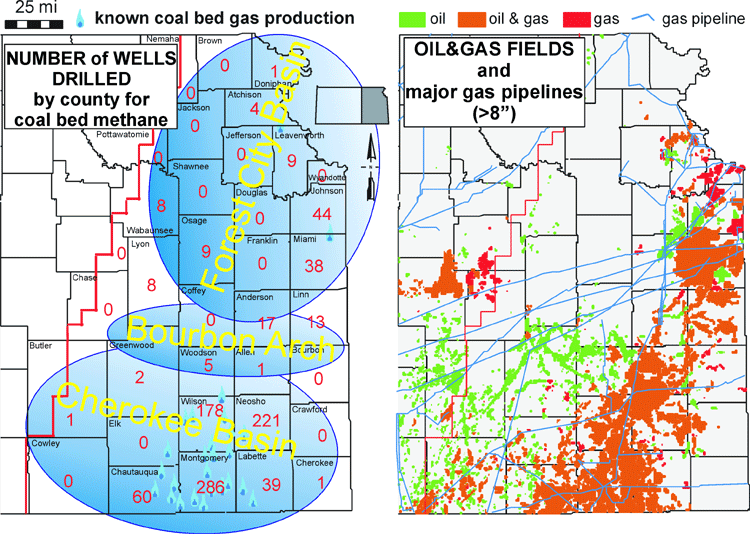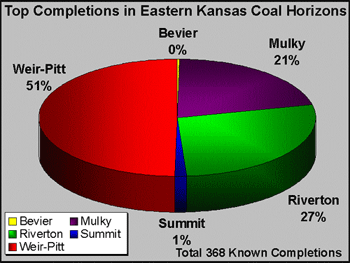 |
|
Kansas Geological Survey Open-file Report 2003-28 |
Petroleum Significance - Active CBM Play

 Conventional
petroleum production in the Cherokee basin that began in the late 19th century
continues to present, although in decline for the past fifty years. Since
the mid-1980's and early 1990's unconventional shale and coal gas wells
have reported cumulative production greater than 300 MMCF. Recent demands
for natural gas, increasing prices, and new technologies have turned the
Cherokee basin into an active energy play. Up to 14 relatively thin coals
beds may be encountered in any one well. The key to a successful coalbed
play is to identify numerous coals with higher gas contents located near
pipeline infrastructure.
Conventional
petroleum production in the Cherokee basin that began in the late 19th century
continues to present, although in decline for the past fifty years. Since
the mid-1980's and early 1990's unconventional shale and coal gas wells
have reported cumulative production greater than 300 MMCF. Recent demands
for natural gas, increasing prices, and new technologies have turned the
Cherokee basin into an active energy play. Up to 14 relatively thin coals
beds may be encountered in any one well. The key to a successful coalbed
play is to identify numerous coals with higher gas contents located near
pipeline infrastructure.
Coals in the Cherokee basin are less than 2,500 feet deep, so drilling costs are relatively low. Top reported completions intervals are in the Mulky coal and overlying Excello Shale, Weir-Pittsburg coal, and Riverton coal. Many producers are completing in coals that are less than 2 feet thick with promising results. The Mulky coal on average is much thinner than other coals, but the combination of a thick black shale with moderate absorbed gas capping the coal, provides an economic target.
|
|
e-mail : webadmin@kgs.ku.edu
Last updated May 2003
http://www.kgs.ku.edu/PRS/publication/2003/ofr2003-28/P1-03.html